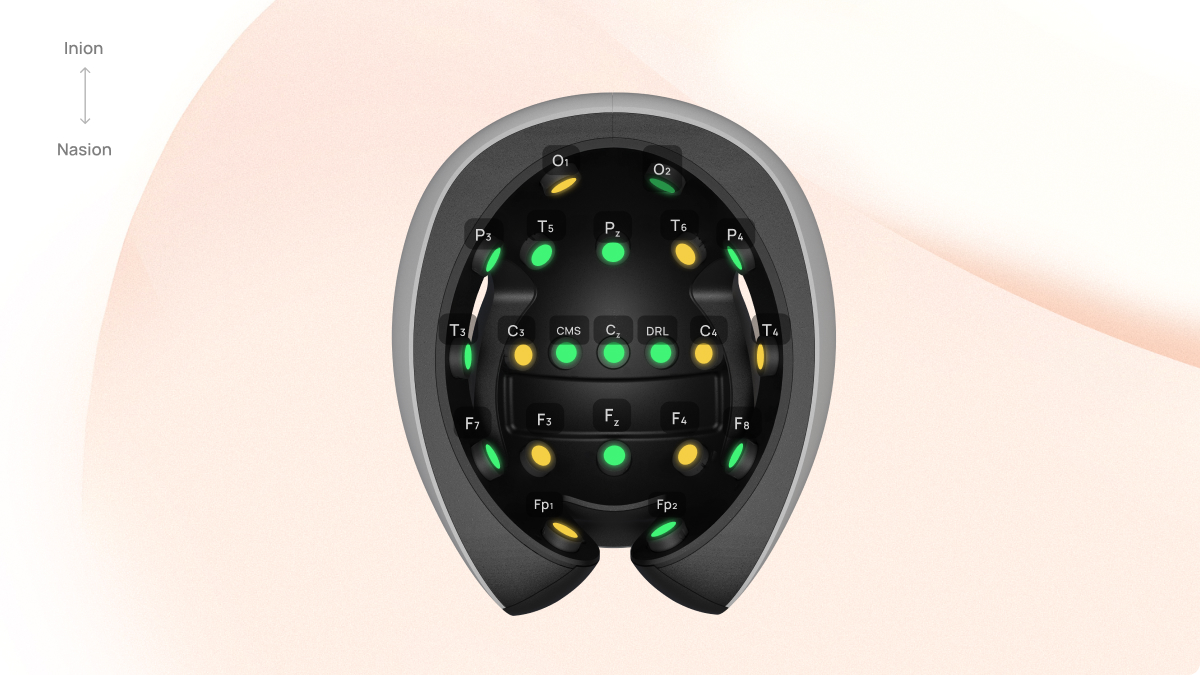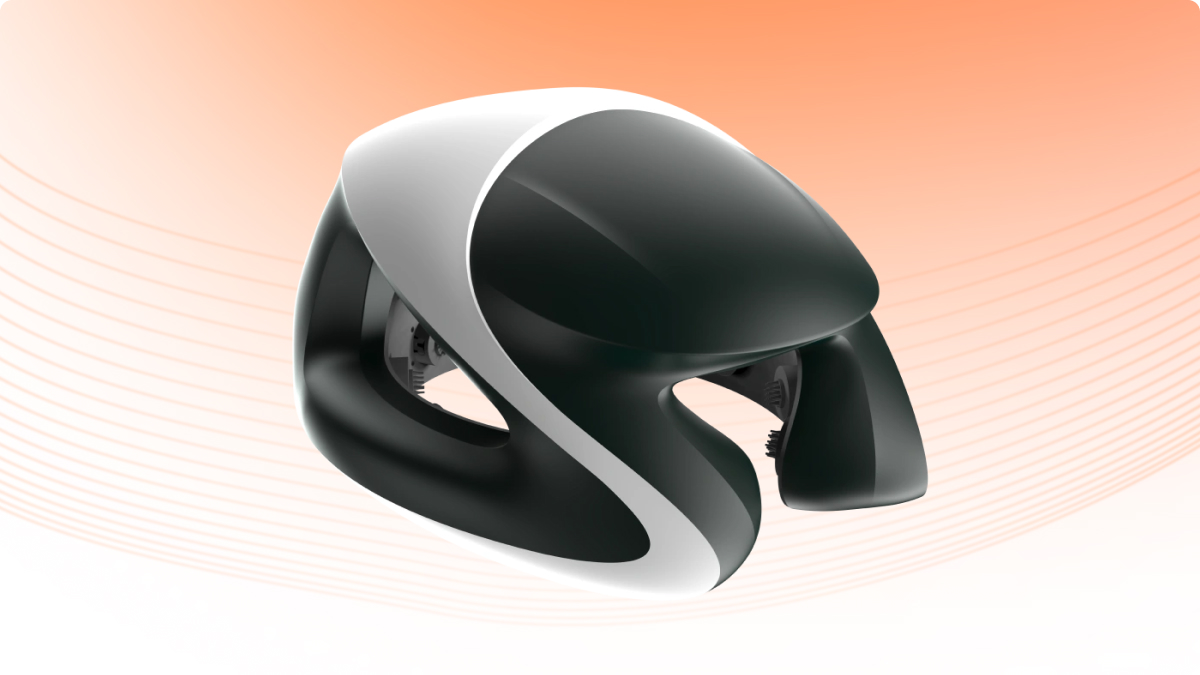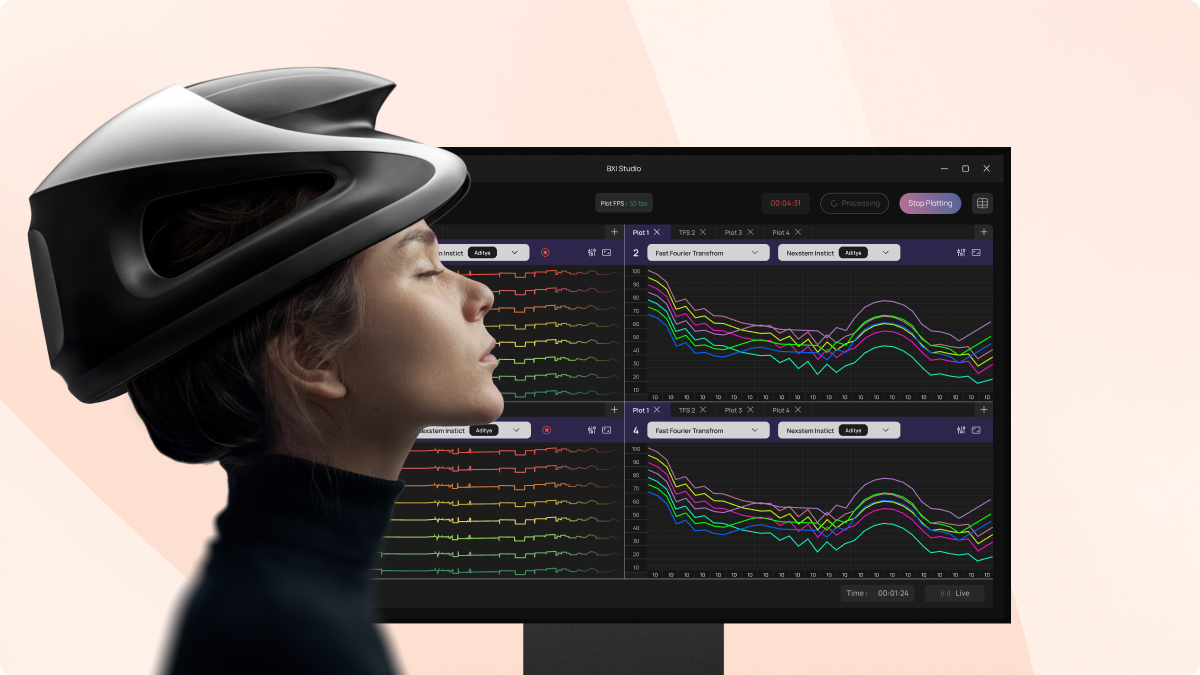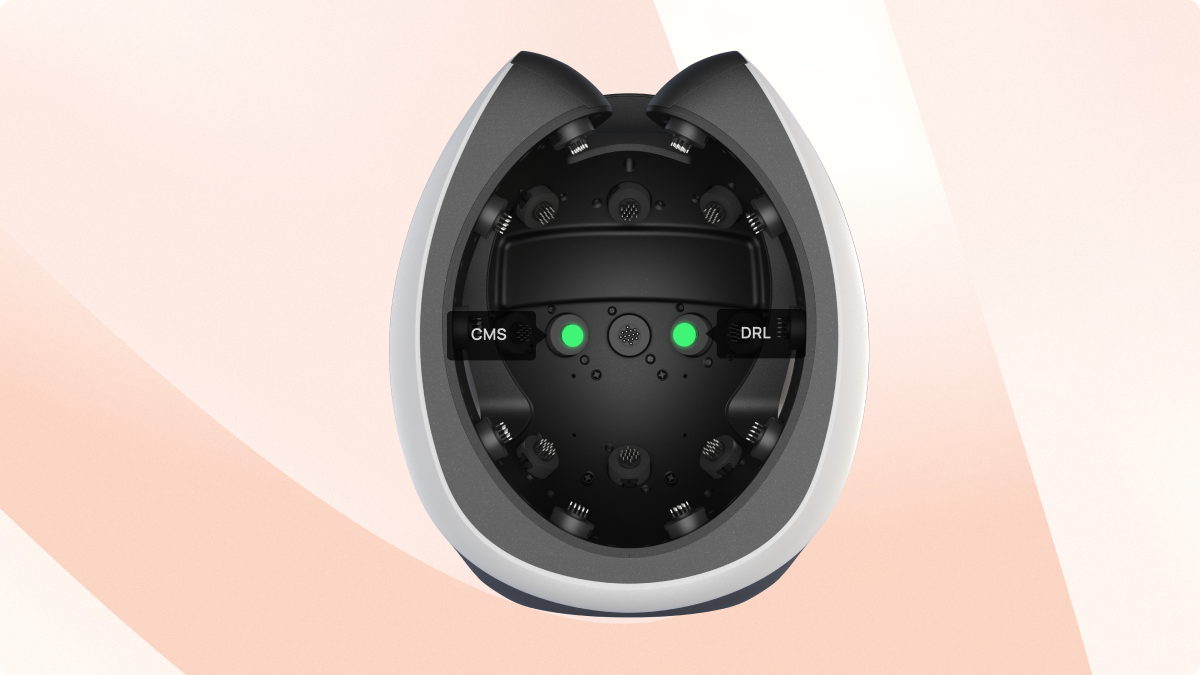¶ Instinct Product Specifications
The Instinct headset, developed by Nexstem, is redefining the landscape of electroencephalography (EEG) with its innovative design and comprehensive capabilities. Designed to cater to both research and clinical needs, this advanced EEG system merges robust hardware with dynamic software solutions, setting a new standard for brain-computer interfacing technology. Below, we delve into the technical specifications that make the Instinct headset a state-of-the-art device in neurological studies and applications.
| Features | Description |
|---|---|
| Channel Count | 19 + 2 (CMS/DRL) |
| Channel Map | Fp1, Fp2, F7, F3, Fz, F4, F8, T3, C3, Cz, C4 T4, T5, P3, Pz, P4, T6, O1, O2 (According to 10-20 EEG System) |
| Electrodes | Ag/AgCl Dry Polymer EEG Active Electrodes |
| ADC Resolution | 24-bit |
| Sampling Rate | 256-1024 Samples Per Second |
| Noise Level | <0.4uV RMS |
| Impedance Measurement | Automated Simultaneous Impedance Measurement |
| Electrode Adjustments | Motorized Electrodes |
| Other Sensors | 6-axis IMU, and support for EMG, ECG and EOG sensors coming soon! |
| Communication Interface | WiFi 6, BT5 |
| Processor | 4 Cortex-A77 Arm Processor 4 Cortex-A55 Arm Processor |
| RAM | 8 GB |
| Storage | 64 GB |
| AI Accelerator | 6 TOPS |
| Power | Built-in battery with >4 hours runtime |
| Weight | 1050 gm without battery 1200 gm with battery |
| Operating System | InstinctOS (based on Debian OS) |
| Software | Instinct SDK and API, Stream App, Headset Manager App, BCI Studio |
¶ 19 Channel EEG system based on 10-20 system
The channel mapping of the system adheres to the industry-standard 10-20 EEG system. This renowned configuration ensures consistency and compatibility with established EEG protocols, facilitating seamless integration into existing research and clinical practices

¶ Design and Usability
¶ Ergonomic and Durable Design
The Instinct headset is designed with user comfort in mind, suitable for prolonged use in diverse settings. It is designed to meet rigorous health and safety guidelines.

¶ Power and Noise Specifications
The built-in battery provides more than four hours of runtime, which is essential for extended research sessions. The device maintains a low noise level of less than 0.4 µV RMS, critical for obtaining clear and precise EEG readings.

¶ CMS / DRL Referencing
Common Mode Sense (CMS) and Driven Right Leg (DRL) circuits are crucial components in EEG (electroencephalography) systems, specifically used to enhance the quality of the signals recorded. Here’s how they work and why they are useful:

¶ How CMS/DRL Works:
Common Mode Sense (CMS): This is an electrode used to measure the common mode signal, which is the average of the voltages at the recording electrodes referenced to the ground. The CMS captures the average noise signals (interferences that are common to all electrodes) present in the EEG recording environment.
Driven Right Leg (DRL): This electrode is used as part of a feedback system to reduce common mode noise. The DRL circuit typically takes the signal from the CMS electrode, inverts it, and feeds it back into the subject’s body through the DRL electrode. This process effectively cancels out the common mode noise picked up by the EEG electrodes by introducing an opposite signal, thus "driving" the body's potential closer to the reference potential (ground).
¶ Why CMS/DRL is Useful:
Noise Reduction: The primary benefit of using CMS and DRL in EEG systems is the significant reduction of common mode noise. This type of noise can stem from various sources, including electrical devices, power lines, and even the body movements of the subject. By effectively canceling this noise, CMS/DRL circuits help in obtaining clearer and more accurate EEG readings.
Improved Signal Quality: By reducing the noise level, the CMS/DRL circuits enhance the overall quality of the EEG signals. This is critical for accurate analysis and interpretation, especially in clinical and research settings where precise data is crucial.
Enhanced Safety and Comfort: These circuits help in stabilizing the electrical environment around the EEG setup, which can contribute to the safety and comfort of the subject during the recording. It minimizes the interference that can sometimes be felt by the subject as discomfort or even electrical tingling.
Better Data Analysis: With reduced noise and interference, the EEG data becomes more reliable and easier to analyze. This leads to more accurate diagnoses in medical contexts and more valid data in research studies.
Conclusion
The Nexstem Instinct headset offers a comprehensive solution for modern EEG applications, blending advanced technology with user-centered design. Its specifications cater to a wide range of needs from clinical diagnostics to cutting-edge neurological research, providing unparalleled precision, reliability, and ease of use. With its robust features and flexible performance, the Instinct headset is poised to become an indispensable tool in the advancement of neuroscience and beyond.